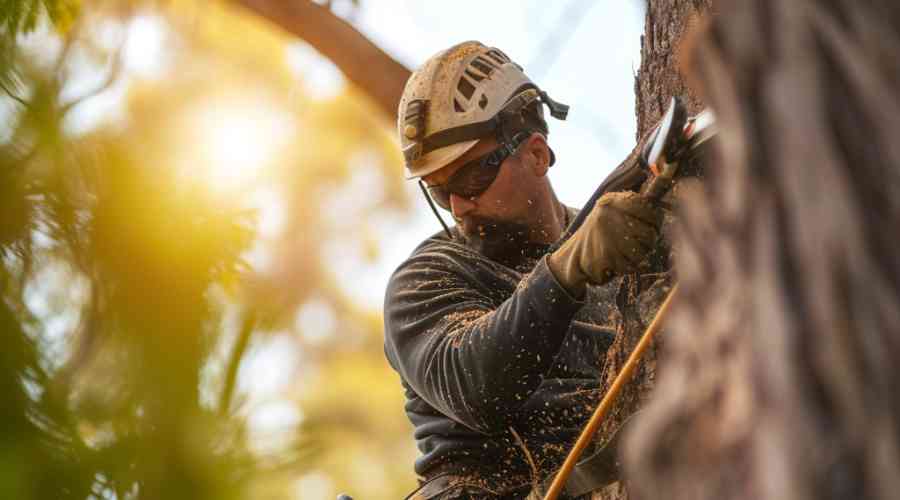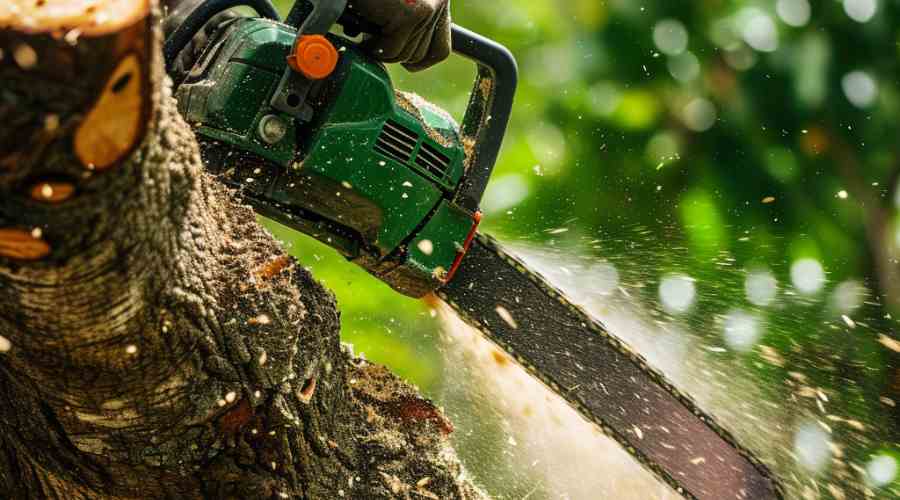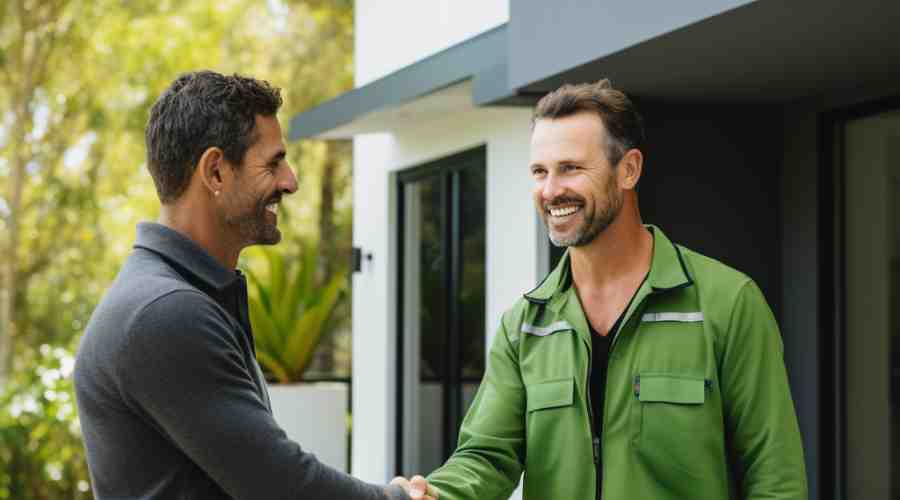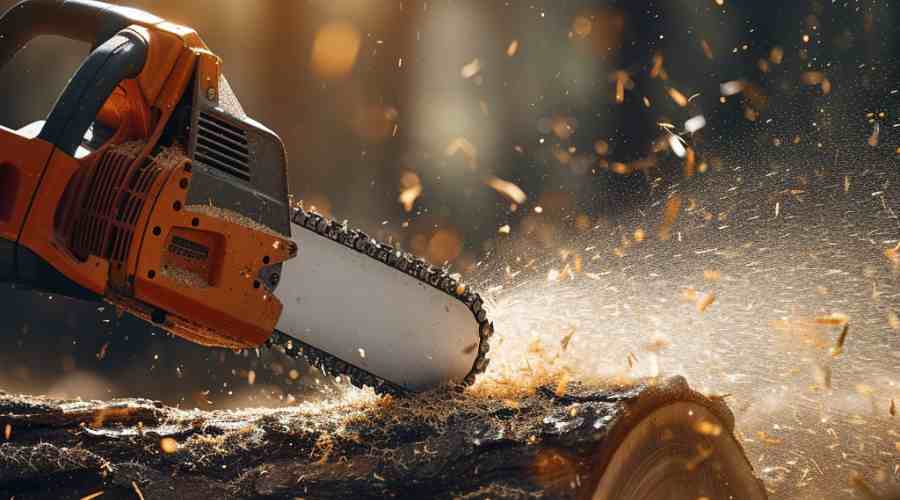Guide to Tree Removal Brisbane
Ultimate Brisbane Tree Removal Guidelines
Removing trees in Brisbane requires proper planning, preparation, and execution to ensure it is done safely and legally. This comprehensive guide covers everything you need to know about tree removal in Brisbane, from reasons to remove, different services, costs, regulations, hiring a professional arborist, and more. Whether you need to remove a dying tree, are planning development works, or want to improve sunlight access, this guide helps you make informed decisions.
What is Arboriculture?
It refers to the cultivation, management, and study of trees. Arborists or tree surgeons are professionals who practice arboriculture. Their core services include:
- Planting trees
- Pruning and trimming trees
- Diagnosing and treating unwanted tree diseases
- Assessing tree hazards
- Safely removing trees
They have technical expertise from training and hands-on experience working with diverse tree species.
Why Hire an Arborist?
Arborists are tree experts who can properly assess which should be removed. Their systematic approach delivers safer, more effective removal processes.
Upsides:
- Expert diagnosis on diseases
- Access specialised equipment for tall trees
- Better planned and safer removal process
- Ensures compliance with regulations
- Can relocate trees if viable
- Will cleanup properly after removal
Benefits of Tree Removal
Removing problematic trees has several benefits:
- Safety: Removes falling and tree risks especially during severe weather. Also removes hiding spots for venomous critters like snakes.
- Sunlight: Lets more natural light into your property and gardens allowing plants to thrive.
- Space: Provides more usable space for landscaping, extensions or other jobs.
- Health: Removes diseased trees limiting spread of infections to other flora.
- Fire prevention: Gets rid of trees in bushfire prone areas to protect properties.
- Aesthetics: Allows you to landscape to realise a unified visual theme.
- Property value: Both safety risk removal and landscape upgrades can improve property prices.
What Is Tree Removal?
It refers to completely taking down the entire tree including the visible portion and the roots below ground. It is the most definite solution when the tree poses an imminent harm, is diseased beyond treatment, or needs removing to make space for structures.
The process involves systematically dismantling all parts of the tree. The limbs are cut into manageable sections and lowered safely to the ground. Chainsaws, rigging ropes and cherry picker assist the demolition. Stump removal may follow afterwards to remove all visible signs allowing you fully use the cleared spot.
Removal requires expertise to fell very high trees or ones near buildings without causing collateral damage. It also produces a large volume of wood debris requiring proper disposal arrangements.
What Is Tree Pruning?
Pruning means cutting away select limbs to achieve better shape or tree health. It is done to improve structure, remove diseased or problematic growth, and allow more light or ventilation.
Pruning is less intrusive than removal, allowing retention of the tree. It can be preventative to reduce wind resistance or just address existing obstruction, fungus or wear. But pruning also creates open wounds making proper cuts and aftercare important.
What Is Tree Lopping?
This service involves cutting main stems and branches back to stubs. It removes more foliage than standard pruning.
Lopping is ideal for situations obstructing access such as overgrown driveways or intruding into roof spaces. Overlong lateral branches unable to support increased loads with maturity are also lopped. It helps resolve clearance issues while retaining some greenery and habitat.
By removing weight from the crown area, it can also prevent wind damage risks in storms. But since it is still injury, after care of cut areas is vital to avoid ingress of pests and diseases.
What Is Stump Grinding?
It tackles the visible tree base remaining after felling work. Using a specialised machine, the wooden stump is milled down inch by inch until fully removed below ground level. The resulting wood chips and sawdust gets collected leaving a flat leveled site.
Grinding away stubborn stumps allows you to reuse the space whether for paving, extensions or landscaping. It removes the hassle and potential hazard they pose along with hiding spots for termites and decay underneath. Just ensure underground utilities are marked beforehand.
What Is Tree Trimming?
Tree trimming as the name suggests is light selective pruning focusing on problematic branches. Ideal for mature, healthy trees, it removes twigs that have become unbalanced, obstructive or damaged.
Common reasons to trim trees include clearing branches threatening the roof, improving outward sightlines along the perimeter or thinning extension blocking sunlight. It can improve tree shape, air circulation and structural integrity.
For overgrown but fundamentally sound trees, trimming strategic portions often suffices avoiding more drastic lopping or removal. It is also cheaper with a gentler recovery period for the tree.
What Is Land Clearing?
It is the mass removal of trees, vegetation as well as demolition of old structures to prepare land for redevelopment. It eradicates everything previously on site whether forests, landscaping or dilapidated buildings.
The extensive nature of land clearing requires expertise coordinating excavators, tree services, waste removal etc within budget and on schedule. Approvals, surveys, wildlife relocation and other prerequisites also apply before mass clearing proceeds.
Meticulous land clearing is crucial as leftover organic matter begins decomposing affecting new construction. Cleared land allows realising plans whether mining sites, right-of-way infrastructure, residential subdivisions or commercial facilities.
Signs You Should Remove a Tree
Here are indications a tree should be removed:
- Visible cavities, cracks, or fungi growing on the bark
- Dying and wilting leaves in summer
- Leaning precariously or noticeably lifted roots
- Obstructing access, views or sunlight significantly
- Causing foundational or underground pipe damage
- Unmanaged termite infestation eating away the base
- Major limbs already falling from the canopy
- Repeated storm damage
- Becoming a danger or nuisance
Pay attention as addressing these red flags early reduces risk and cost.
Equipment Used in Tree Removal
Professional Brisbane tree removal services utilise equipment operated by trained and licensed personnel. The right machinery is vital to safely and efficiently dismantle large trees in urban settings.
Chainsaws
Chainsaws equipped with sharp chains and high-performance engines provide the power to cut through thick tree trunks. Different sizes are used based on the cutting task. Larger chainsaws over 20” bars tackle thick trunks while smaller 14” saws trim accessible branches. Chainsaw protective clothing like chaps, gloves, helmets and visors are mandatory.
Wood Chippers
These grind pruned limbs into small woodchips for recycling. Using high speed rotating blades, they shred woody material into landscaping mulch or biomass fuel. Having an onsite chipper substantially reduces debris volume needing disposal. Larger drum style chippers take whole logs while disc chippers handle brush.
Stump Grinders
Grinds away remaining tree stumps after felling to remove all visible signs. Uses a rotating cutting disc that chips away the stump inch by inch. Larger walk-behind models work best for big diameter stumps. Can re-level the ground for lawns or paving.
Elevated Work Platforms
Provides aerial access for rigging and cutting branches high up. The hydraulic booms extend to lift workers in a bucket safely up to the canopy. Allows for precision dead branch removal rather than dropping the whole tree.
Cranes
Used to safely lower large cut portions to prevent damage. Can lift workers and tools up. Larger cranes have extending booms and greater lifting capacity for big trees. Helpful when working near homes or structures.
Tub Grinders
Heavy duty industrial chippers capable of pulping complete felled trees into mulch. Their tub-like drum with cutting blades spins at high speeds while trees are fed in bit by bit. Ideal for land clearing sites with high volumes of trees.
Grapple Trucks
Trucks fitted with hydraulic grabbing claws to collect and efficiently load tree debris. The grapple arm picks up logs, boughs and chips into the dump truck body. Speeds up cleanups significantly and reduces manual handling.
Root Barriers
Prevents regrowth from remaining root systems underground after removal. Installed around the edges of old stumps, they block roots from resprouting new shoots. Made from thick polyethylene plastic.
The right machinery minimises manual labour, protects nearby structures, and speeds up removal jobs significantly. They also improve safety for workers up and down in trees. Investing in professional-grade apparatus is a must for full-service companies.
Licensing Requirements in Brisbane
Arboriculture work in Brisbane requires certification and licensing under Queensland law.
Reputable tree removal companies have licensed personnel certified as Level 5 Arborists or Qualified Supervising Arborists (QSA). They undergo training and assessments on safety, regulations, species, proper pruning methods and risk management.
Consumers should verify licenses before hiring a Brisbane tree removal firm.
Brisbane City Council Regulations
In Brisbane, you may require council approvals to remove or substantially prune trees. This depends on factors like:
- Tree size and species
- Location on your property
- Local tree protection laws
Generally permission apply for:
- Native trees over a certain diameter
- Trees within a mapped vegetation protection area
- Landscape heritage register trees
Sanctions up to $667,500 can apply for unapproved removal of protected trees in Brisbane based on the Queensland Government Planning Regulation 2017.
Reputable arborists handle required paperwork and coordinate inspections to ensure their work meets regulations. Check service guarantees as improper pruning is harder to fix than removal.
Dangers of DIY
Attempting removal yourself seems like saving money but has serious risks:
- Trees are heavy often weighing over a ton and have dangerous tension and compression forces
- Limbs, machines and even the tree can drop or snap back unpredictably
- Using chainsaws while climbing with no fall protection has caused many amateur injuries
- No insurance leaves you liable if something goes wrong damaging property or causing injury
In summary, the dangers of DIY tree removal include:
- Crush injuries from falling trees or bouncing limbs
- Related wounds like chainsaw lacerations or struck by log chips
- Falling from heights while trying to cut branches
- Getting trapped or pinned under shifting timber
Leave it to licensed pros with proper rigging, protective gear and liability insurance. The small cost savings of DIY are not worth injury or permanent disability.
Choosing a Reliable Professional Tree Removal Company
With severe consequences possible if things go wrong, only hire licensed arborists for safety and results.
Signs of an Experienced Arborist
- Verification – Fully licensed, insured and owner background checks out
- Good practices – Follows safety and industry standards
- Knowledge – Familiar with local tree conditions, regulations, species etc
- Patience – Spends time to inspect site, explain options and answers all questions
- Reliability – Prompt service as scheduled and within quoted budget
- Cleanliness – Worksite and surrounding area left cleaner than found
- Responsibility – Assumes full liability if incidental property damages occur
- Reasonable pricing – Competitive fixed quotes without hidden surprise charges
- Reviews – Has more than 95% positive customer reviews
Brisbane Tree Removal Cost Guide
Professional tree removal service costs in Brisbane vary based on the below factors:
- Size – Height, trunk thickness, canopy span, accessibility
- Site conditions – Slope, soil, proximity to structures, overhead wires
- Tree type – Some species have denser wood requiring more effort
- Additional services – removal of stumps, debris disposal, add to costs
Here is a rough cost range guide though exact pricing requires site inspection:
| Type | Small Tree | Medium Tree | Large Tree |
|---|---|---|---|
| Cost range | $250 – $800 | $800 – $1500 | $1500 – $5000 |
Other charge considerations:
- Minimum fees of $250 for smaller jobs
- Higher pricing during emergency storm response
- Fuel, equipment rental and dumping fees may be extra
- Complex jobs with cranes, root barriers etc add $1000+
Cost saving tips:
- Group similar projects in your area to qualify for volume discounts
- Have dead trees removed in conjunction with other landscaping works
- Take advantage of seasonal specials during off-peak periods
About Brisbane
Brisbane is known as the city of trees, with lush greenery throughout. This leads to a high demand for reputable tree services to maintain this abundant urban forest. From native eucalypts to cultivated exotic species, Brisbane’s trees require regular pruning, removal and strategic thinning. With storms, disease and development ever-present threats, Brisbane households and councils invest heavily in proactive tree care.
Major Brisbane Regions and Tree Facts
Here is background on key regions which shape costs and tree removal regulations:
North Brisbane
Known for its rolling hills, parks and waterfront communities along coastal Moreton Bay. Common native trees include various gum, wattle, Brisbane laurel and tallowwood species. Due to the hilly terrain, removal requires added rigging precautions.
East Brisbane
Includes coastal and bayside suburbs with sandy soil conditions that see swamp mahogany, eucalypts and weatherboard species thrive. The water saturated soil causes more windfall risks that requires ongoing maintenance pruning.
South Brisbane
Has a vibrant urban city center, housing renovators and industrial zones. Deciduous trees, camphor laurels, jacarandas and maritime pines grow well here. High density housing means trees often block views or access needing removal.
West Brisbane
A growing area with emerging new suburbs. Flooded gum, pink bloodwoods and forest red gum eucalypt varieties populate this region. Due to ongoing development tree removal permits and land clearing expertise is essential.
FAQs
Do I need a permission to remove a tree in Brisbane?
Yes, if the tree is very large, protected or in a special zone. You can get heavy fines for cutting these trees down without permission.
When is the best season for tree removal?
Cooler months like fall and winter. Trees are more dormant so there is less sap flow, easier access and lower emergency cost.
How long does removing a tree take?
For a medium 20 meter gum tree, 2 to 4 hours typically. Hard to reach trees can take a full day with the stump.
Will removing my tree damage the yard?
Maybe some light damage from trampled grass or rutted garden beds. But pros use mats and fix any repairs needed after.
Is tree removal messy?
Good crews fully clean up, but expect some minor leftovers like leaves or wood bits. They use nets, tarps and leave the site tidy.
Can you save or replant an existing tree?
Sometimes, using a tree spade machine. But it must be suitable for transplantation and the new spot must meet its growing needs.
Do you offer payment plans?
Some firms allow installment plans over 3-6 months for bigger jobs. Or you can check financing options from major credit cards and services like PayPal.
Do you use subcontractors?
Our licensed arborists have full in-house capabilities. Only for niche engineering needs might we use trusted partners, but still oversee the work quality closely.
After Removal is Complete
With the tree finally gone, your place may look bare and in need of replanting. Consider the below tips:
- Stump grinding – Grind away leftover tree roots to reuse the empty spot
- Backfill holes – Fill cavities left over using clean topsoil to level it off
- Landscaping – Plant shrubs, grass or native species to restore greenery
- Redesign spaces – Extend flower beds, water features or sitting areas
- Add structural elements – Install paths, benches, or an alfresco dining space
- Maintain clearance – Prune back nearby foliage to preserve better visibility
- Request professional advice – Let your qualified arborist report or suggest suitable plants considering soil, sun and space sizes
The Bottom Line
Removing mature trees inevitably leaves behind a void but when done properly, that space allows new possibilities. Whether repurposing it for structures or reinventing your private property’s ambiance through landscape architecture. A meticulous tree removal process marks a new beginning.




